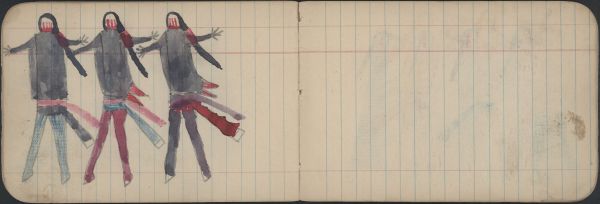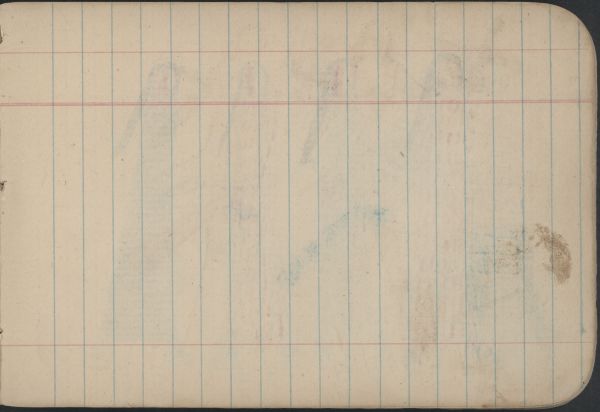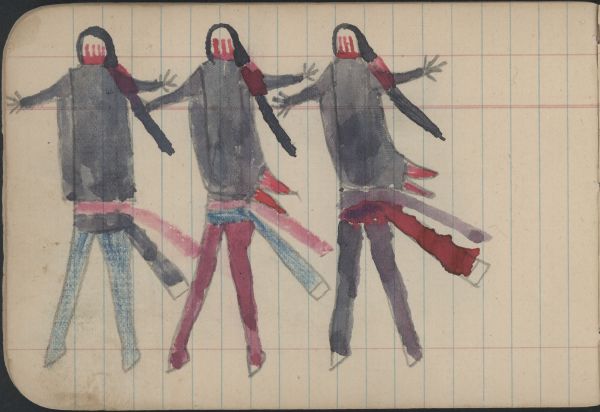GROUP, DANCE: Three Men in Black Shirts Dance; Blank Page
Ethnographic Notes
Right (page 20): Blank Left: DANCE. Three men in black shirts appear to dance with outstretched arms and wide stances. Their braids, belts, and breech clouts all are at angles to suggest motion. Their upper torsos are painted in black ink smudged by fingertips. Figures are formed from pencil outlines, filled with blue crayon or pencil and red water color. The left figure's hand is almost off the page, as though the artist ran out of room. All have red vertical stripes on the lower halves of their faces; all have one braid showing, wrapped at the shoulders in red cloth. All wear sashes�two red and one black. One has a black breech clout (left), one a blue (center), and one a red (right). Pants are indicated only by coloring the legs of each man: blue, red, and black. Dancing by this group of incarcerated Northern Cheyenne men was documented at the time. An eyewitness connect dance to the act of creating a drawing. Doctor J. Odenbaugh, of Wharton, Ohio, apparently was in Dodge City in 1879 and met Wild Hog. He described all the seven men assembling into a row for ceremonial dancing and singing: "The Chief seemed very much pleased to meet me, called up his warriors, who were seated on the floor, and they all marched around a circle repeating something. The chief then asked Mr. Bennett for some paper. He handed him his card, and he drew a picture on the card and handed it to me, at the same time requesting Mr. B. to say to me, 'That as long as I carried that card no harm could befall me, and if I ever met any of his People to show the card to them, and they would be good to me'" (National Anthropological Archives, Smithsonian Institution, Garrick Mallery Collection on sign language and pictography, MS 2372, Box 11, Folder Cheyenne; Pictograph by Chief Wild Hog (copy) and letter from J. Odenbaugh to J.W. Powell). Media: Lead pencil, blue crayon, red water color, black ink.


